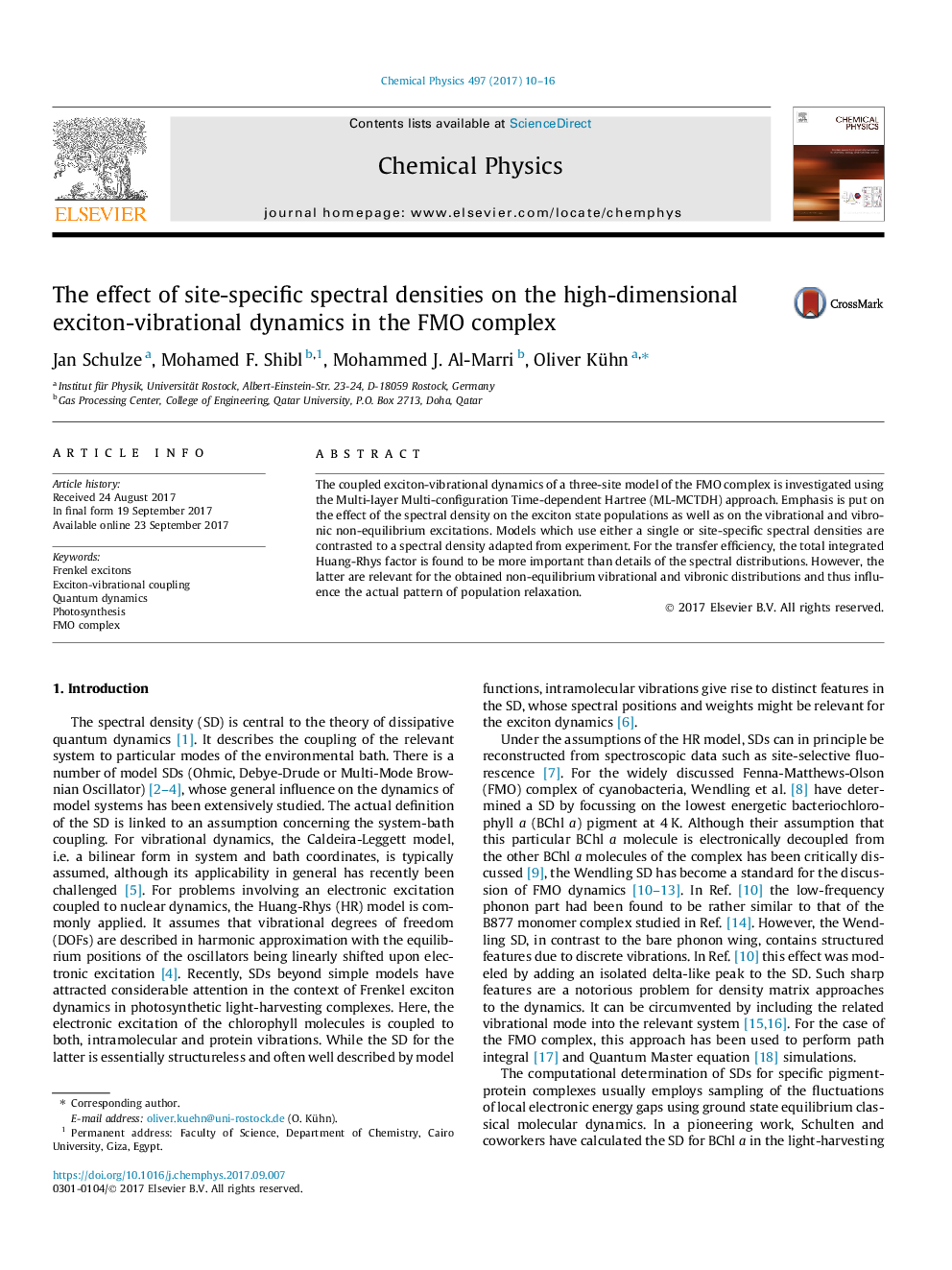| Article ID | Journal | Published Year | Pages | File Type |
|---|---|---|---|---|
| 7837445 | Chemical Physics | 2017 | 7 Pages |
Abstract
The coupled exciton-vibrational dynamics of a three-site model of the FMO complex is investigated using the Multi-layer Multi-configuration Time-dependent Hartree (ML-MCTDH) approach. Emphasis is put on the effect of the spectral density on the exciton state populations as well as on the vibrational and vibronic non-equilibrium excitations. Models which use either a single or site-specific spectral densities are contrasted to a spectral density adapted from experiment. For the transfer efficiency, the total integrated Huang-Rhys factor is found to be more important than details of the spectral distributions. However, the latter are relevant for the obtained non-equilibrium vibrational and vibronic distributions and thus influence the actual pattern of population relaxation.
Related Topics
Physical Sciences and Engineering
Chemistry
Physical and Theoretical Chemistry
Authors
Jan Schulze, Mohamed F. Shibl, Mohammed J. Al-Marri, Oliver Kühn,
